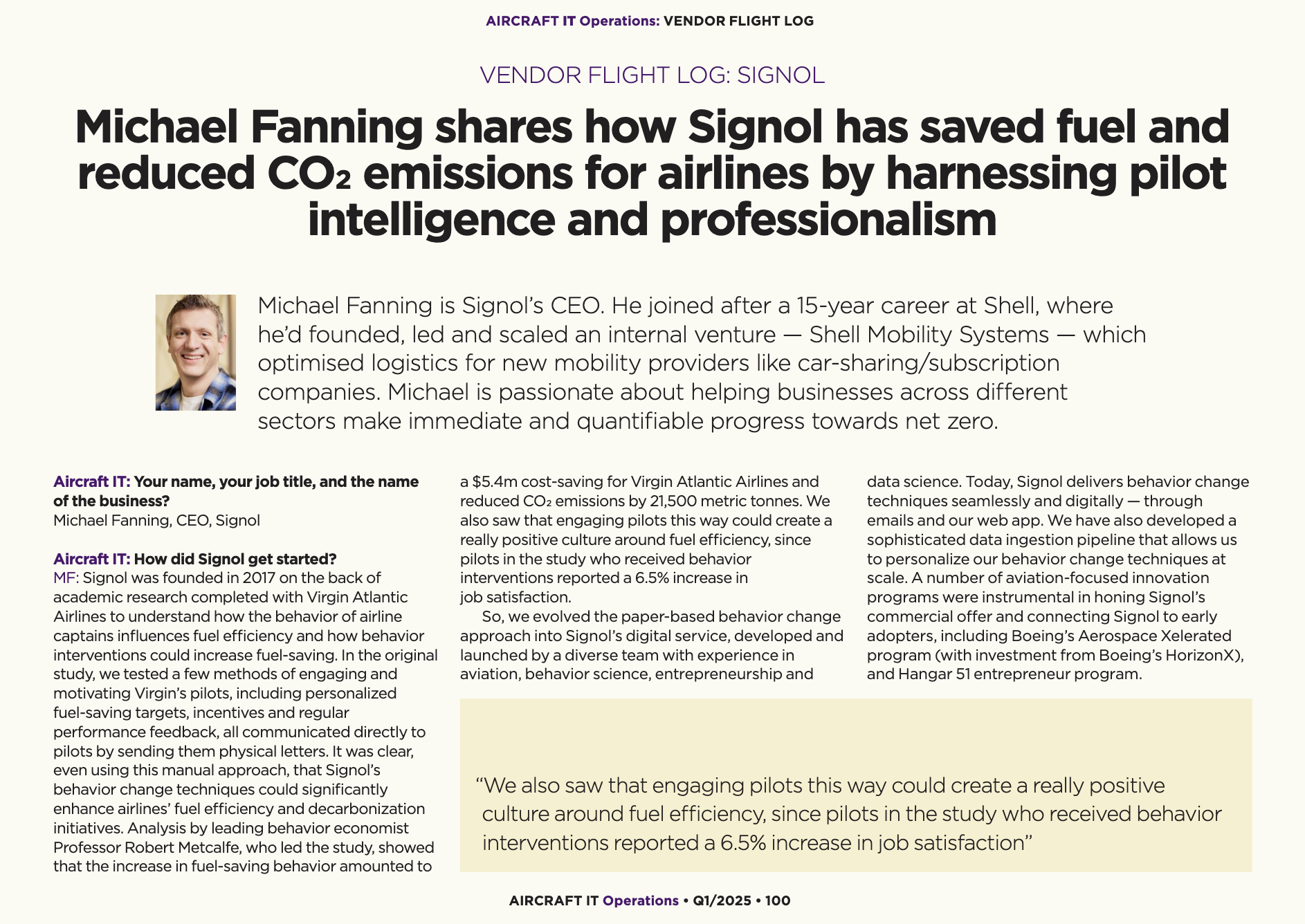Let’s now consider the opportunity element of the COM-B framework: Does the physical environment and the social context make it possible or likely for an individual to engage in a behaviour? We know pilots and seafarers face physical barriers that prevent them from saving fuel when flying or sailing respectively. For instance, some airports don’t allow Single Engine Taxi and some aircraft don’t allow Single Engine Taxi Out. In maritime, optimally trimming the vessel isn’t possible at port or while manoeuvring. At Signol, we work with each airline and shipping company to explicitly identify these circumstances to ensure we only focus on genuine opportunities for fuel-saving behaviour.
Even when accounting for these physical barriers, our statistical analyses show untapped opportunities for both groups to save fuel. Other barriers might lie in the social context around fuel-saving initiatives. In particular, how supportive the employer and key stakeholders are of fuel-saving behaviour and whether pilots and seafarers perceive their peers to be making fuel-saving efforts, too. Our research has indicated that airline captains and ship masters and chief engineers don’t always receive recognition for their fuel-saving efforts and in some companies, they’re far more likely to hear from management when something has gone wrong than when they’ve achieved an efficiency gain. The limited social support for pilots and seafarers’ fuel-saving behaviour is a barrier that Signol addresses.
Finally, we arrive at motivation – the third element of the COM-B framework. Over the years, we’ve investigated how emotionally invested pilots and seafarers are in saving fuel for their employers and cutting down CO2 emissions to help the environment. Our first finding is that, unsurprisingly, these two groups of professionals are not homogeneous. Individuals within both groups are motivated by different things – such as their keen sense of professionalism, setting new personal bests, and balancing the top priority of safety with other priorities such as on-time performance. Saving fuel or CO2 emissions is not always one of their top priorities.
Very few pilots or seafarers report a high degree of satisfaction when they engage in fuel-saving behaviour or a high degree of disappointment when they miss an opportunity to save fuel. These varying levels of motivation for fuel-saving explain, at least in part, the variation we’ve seen in how often each airline captain or ship master and chief engineer acts on their fuel-saving opportunities. Given the generally high levels of capability and the number of untapped opportunities for fuel-saving behaviour we see in both industries, we’ve identified the variance in individual motivation as a key barrier to increased fuel-saving behaviour.






